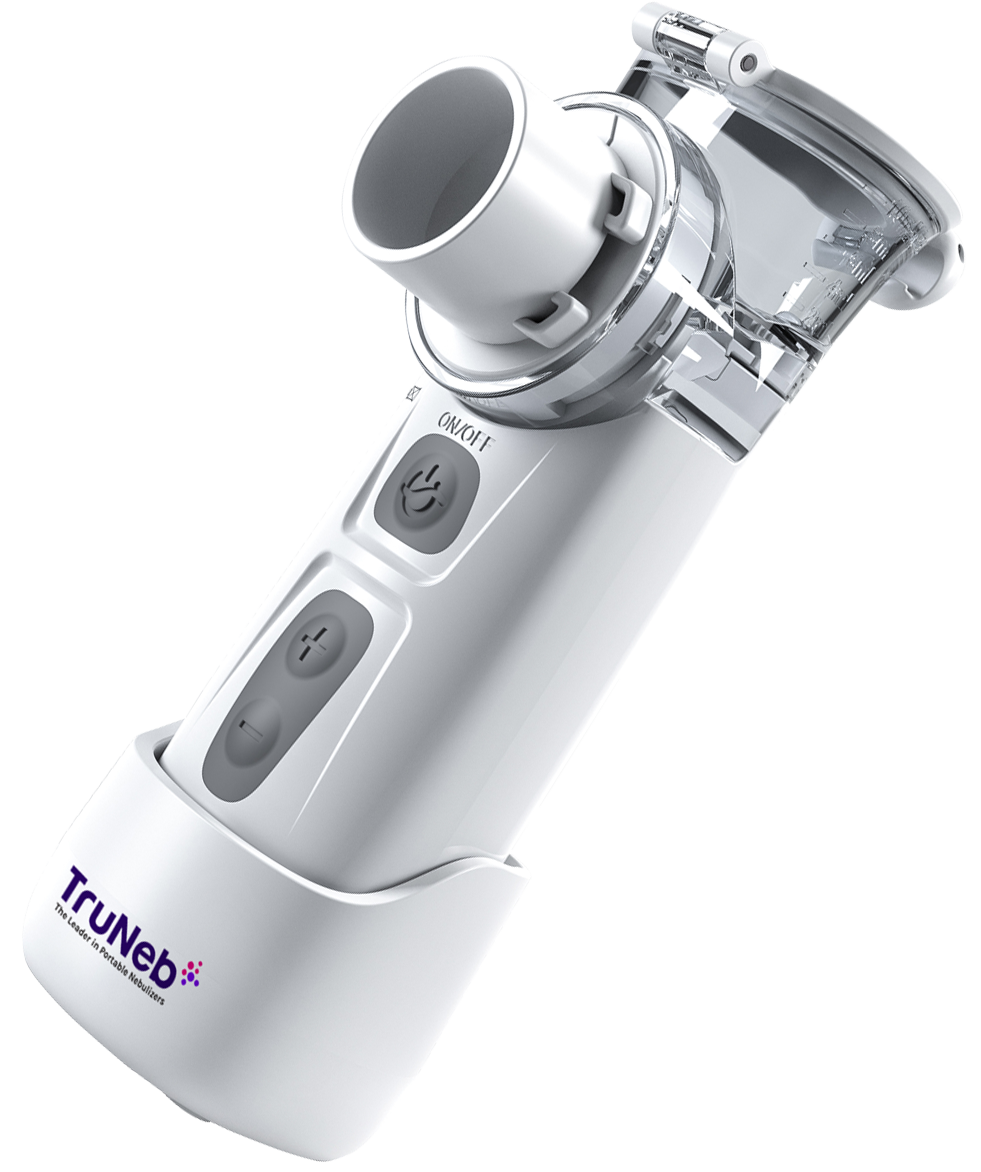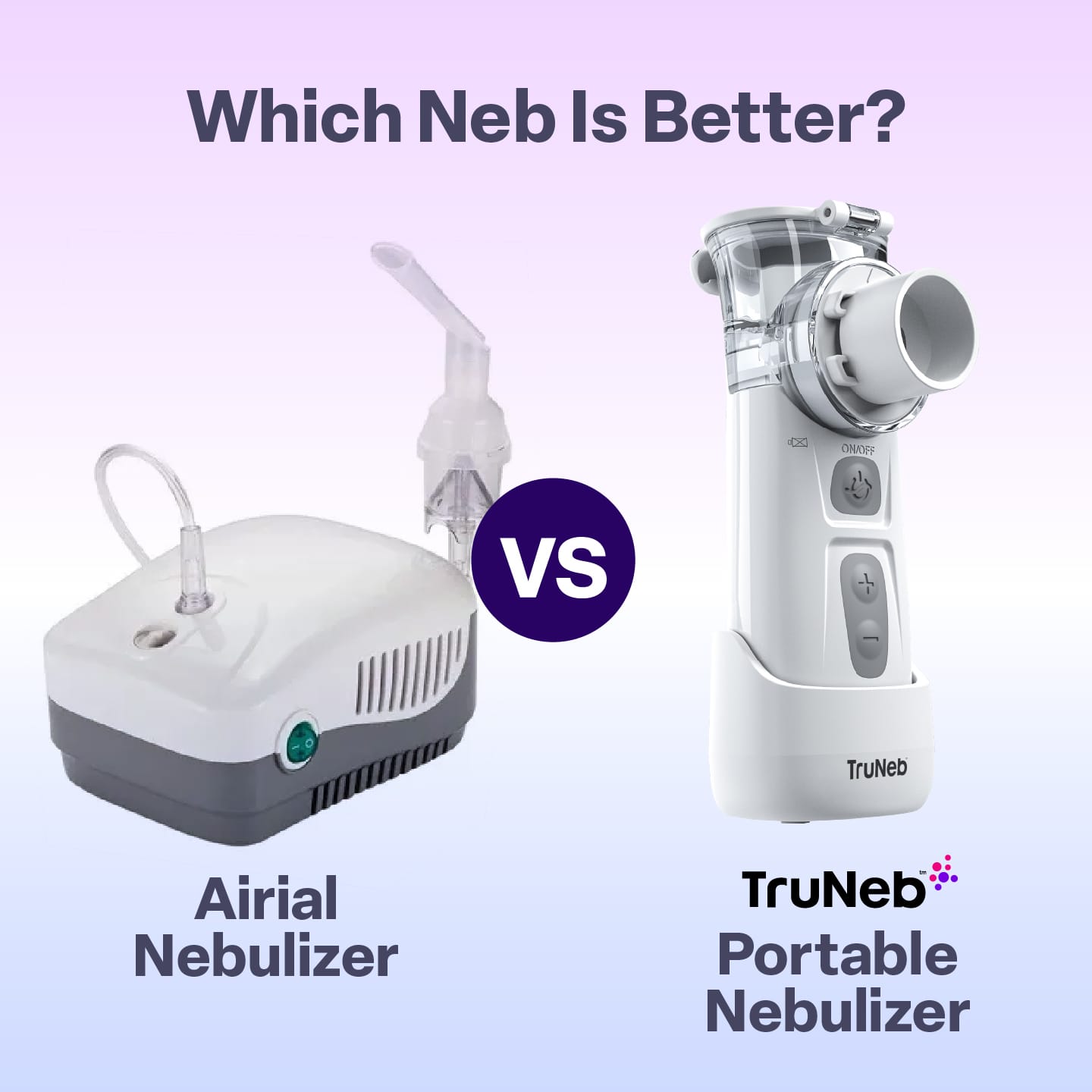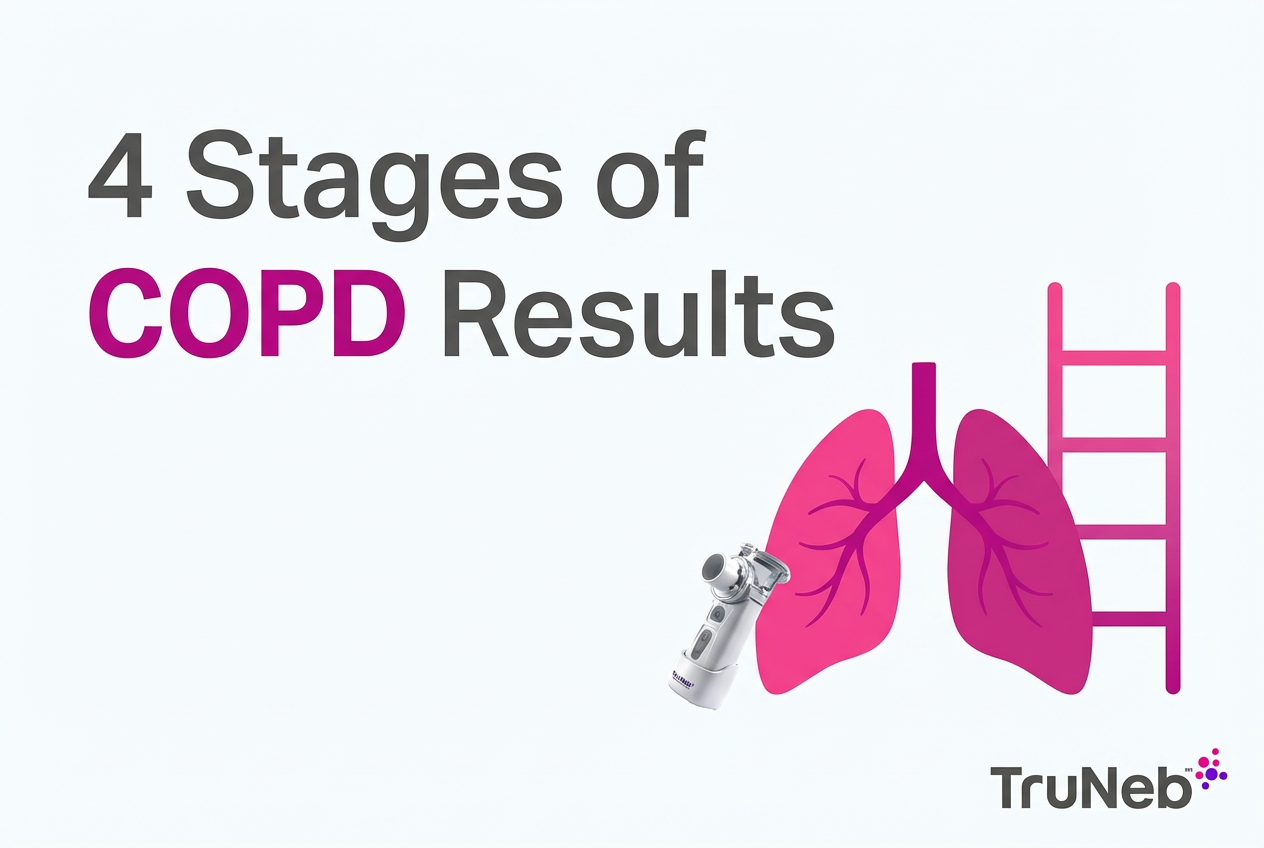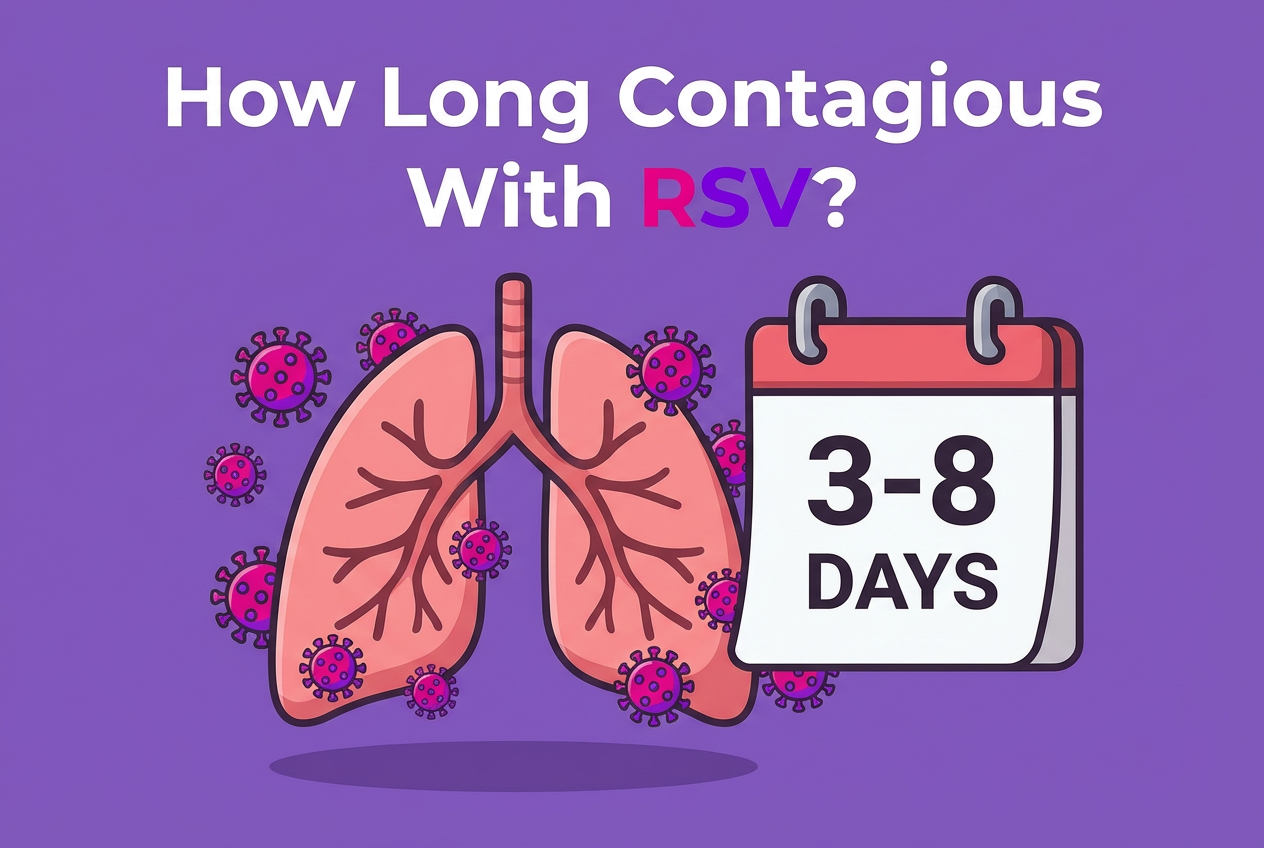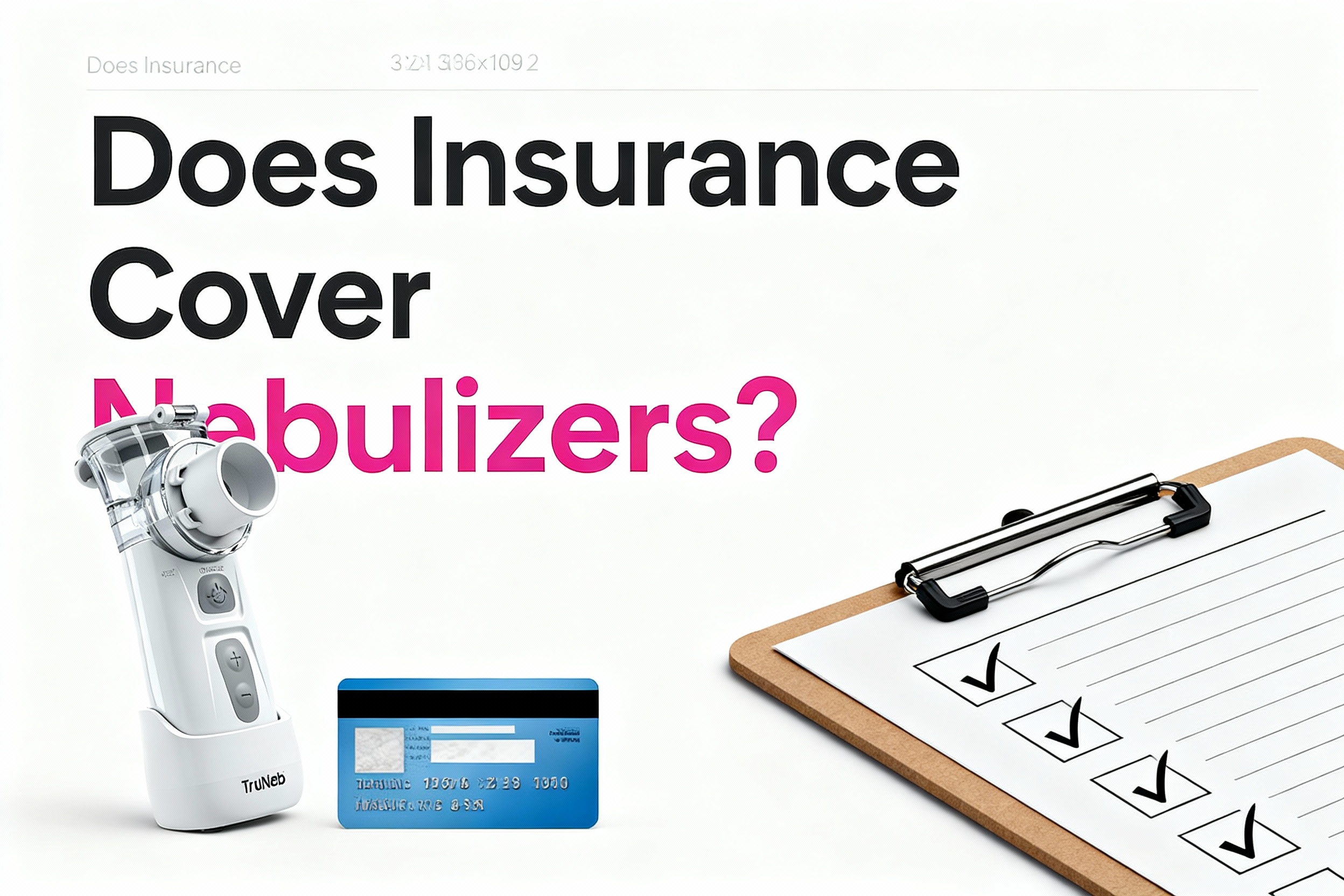On this page
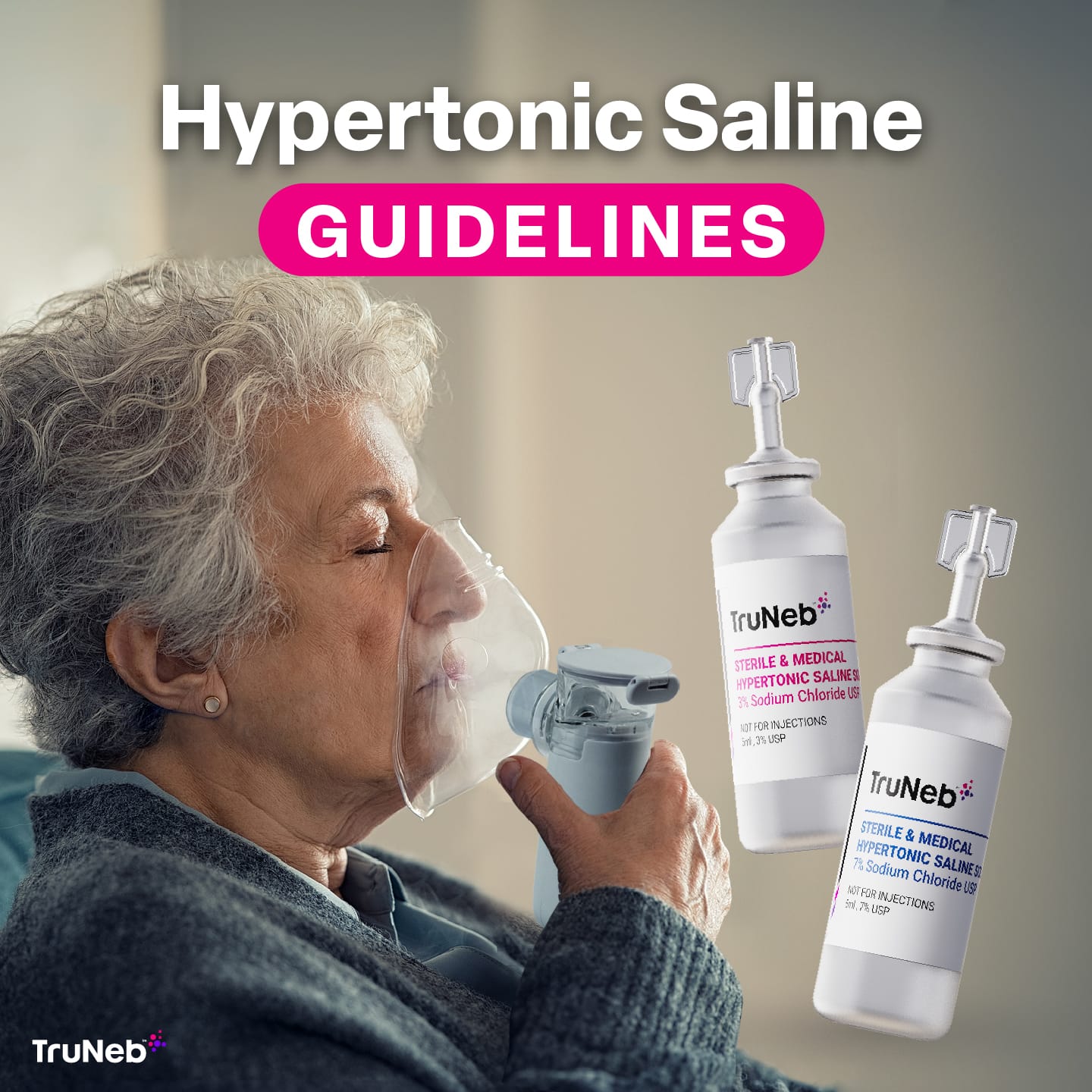
Thank you for purchasing Hypertonic Saline Solution from TruNeb™. We provide premium, medical-grade hypertonic saline manufactured in an FDA-approved laboratory. This guide applies to all concentrations of our hypertonic saline, as the usage instructions and general details are the same regardless of the Sodium Chloride USP strength (0.9%, 3%, 7%, etc.). Please read this guide carefully to understand the risks and proper use of hypertonic saline (H/S).
How Hypertonic Saline Solution Works
Hypertonic saline (H/S) is a medical grade salt water solution purchased to help clear mucus (sputum) from your airways.
Here’s how it works:
- Increases Salt in the Airway: The saline solution increases the amount of sodium (salt) in your airway from nebulization.
- Attracts Water: The salt attracts water into the airways, which helps thin mucus.
- Improves Cough Out: Thinner mucus is easier to cough out, clearing your airways more effectively.
- Eases Breathing: By clearing the mucus, it becomes easier and more comfortable to breathe.
Research has shown that inhaling H/S twice a day can help people with conditions like cystic fibrosis (CF) experience fewer lung infections.
- Side Effects: Some side effects include increased coughing, sore throat, and chest tightness from airway irritation.
How to Use Hypertonic Saline Solution
- Open Vial - Twist off the top to open.
- Pour Solution - Pour into the nebulizer cup.
- Nebulize - Operate the nebulizer.
- Dispose of Vial - Throw away the empty vial.
Recommended Use
Use hypertonic saline solution as directed by your doctor. It is typically recommended for individuals with conditions like cystic fibrosis, bronchiectasis, or chronic obstructive pulmonary disease (COPD) to help clear mucus from their airways. Always consult your doctor for the exact dosage and frequency suitable for you.
Equipment Needed (Any Nebulizer!)
Any portable, mesh, ultrasonic, or traditional jet nebulizer will work fine with our hypertonic saline solution. We have not received any reports of issues using our H/S with various nebulizers. It's simply a saline solution designed for nebulization.
Learn more about the TruNeb hypertonic saline nebulizer.
Storage
- Store at room temperature.
- Avoid freezing or exposure to excessive heat.
- Use only sealed vials; do not use if the vial is broken or already open.
- Discard any remaining solution if the vial has been open for more than 24 hours.
Ingredients
- Sodium Chloride
- Distilled Water
- Preservative-Free
Warnings
- NOT FOR INJECTION
- ONLY FOR INHALATION
- Only use sealed vials, do not use if the vial is broken or already open.
- Do not mix with other medications or substances
- Follow the nebulizer manufacturer's instructions
- Keep out of reach of children
- Do not use after the expiration date
- Discontinue if you experience any adverse reaction and call your doctor
- Only use a single dose at a time
Frequently Asked Questions
What does "hypertonic" mean in Hypertonic Saline?
- "Hypertonic" refers to a solution that has a higher concentration of solutes (in this case, salt) compared to another solution. When we talk about hypertonic saline, it means that the saline (saltwater) solution has a higher concentration of salt than the body's cells and blood.
Can I mix hypertonic saline with other medications in the nebulizer?
- No, do not mix hypertonic saline with other medications unless advised by your doctor.
How often should I use hypertonic saline?
- Many people find that nebulizing hypertonic saline twice a day provides the best symptom relief, but always follow your doctor's specific instructions.
What should I do if I miss a dose?
- Use the missed dose as soon as you remember. If it's almost time for your next dose, skip the missed dose. Do not double up.
Can I use hypertonic saline if I’m pregnant or breastfeeding?
- Consult your doctor before using hypertonic saline if you are pregnant or breastfeeding.
What are the common side effects of using hypertonic saline?
- Common side effects include increased coughing, sore throat, and chest tightness due to airway irritation.
What should I do if the nebulizer isn't producing mist?
- Ensure all components are correctly assembled and the compressor is functioning properly. Check the manufacturer's troubleshooting guide.
Can children use hypertonic saline solution?
- Yes, but like adults, only if prescribed by a licensed medical provider. Consult your doctor for specific guidance.
What if I experience an adverse reaction?
- Discontinue use immediately and call your doctor. If severe shortness of breath occurs, seek emergency medical care.
How long does each nebulization session take?
- If you're using the TruNeb portable nebulizer, the average time should only be 5 minutes. However, regardless of the nebulizer you use, continue the session until the medication cup is empty.
Can I reuse the solution from an open vial?
- No, use only sealed vials and discard any remaining solution if the vial has been opened already.
Is hypertonic saline solution safe for long-term use?
- Yes, studies have shown that hypertonic saline is safe for long-term use. However, not everyone reacts the same way. If you experience severe side effects or discomfort, stop using it and consult your doctor.
Contact TruNeb™
If you need further assistance or support regarding your Hypertonic Saline Solution, don't hesitate to open a support ticket with us by visiting our Contact Us page.
Thank you so much for choosing TruNeb™!
Additional Resources
Links to scientific studies and additional resources on the benefits of hypertonic saline solution.
References to medical guidelines and standards.
Hypertonic Saline Overview, Cystic Fibrosis Foundation
Hypertonic Nebulization Research, PubMed
Hypertonic Saline for Traumatic Brain Injury
Use Cases for Hypertonic Saline from JRSM Journal
Hypertonic Saline Safety Overview, SHIP-CT Study

